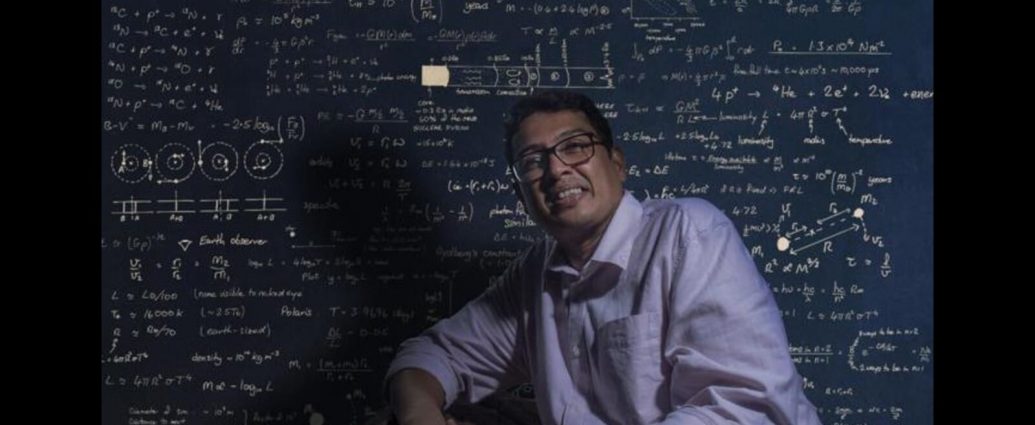For weeks, astrophysicist Manoj Puravankara struggled to find good Master’s students to add to his A-list team researching young stars in the universe. All that changed last month. Scientists are now falling over each other to work with him. “I’m inundated with emails,” says the 49-year-old faculty member of the department of astronomy and astrophysics at Mumbai’s Tata Institute of Fundamental Research.
Puravankara recently became one of only two Indian scientists granted use of the new, $10 billion James Webb Space Telescope (JWST). Built jointly by the European Space Agency, NASA (the US’s National Aeronautics and Space Administration), and the Canadian Space Agency, the giant telescope — the most powerful ever built — was launched on December 25, 2021, and reached its orbital point, nearly 1 million miles away from Earth, a month later.
In April, NASA began accepting applications from scientists wishing to use it. More than 1,100 proposals flew in. Only 266 have been accepted in the first cycle. Puravankara and his team have been allotted a total of 66 hours in which he may use JWST to study stars in a way humans never could before.
Puravankara has been studying star and planet formation for more than 20 years. He holds a PhD from the Indian Institute of Astrophysics, Bengaluru, and was a postdoctoral fellow at Taiwan’s Academia Sinica Institute of Astronomy and Astrophysics. “The telescope will significantly push the envelope on how much we know,” he says. Excerpts from an interview.
Tell us a little bit about what you’re hoping to do in your 66 hours with the telescope.
Stars are, in some sense, like human beings. They’re born, they have an active and violent youth, and a staid, sedate middle-age. Then they expand, consuming the planets in their orbit, and die out. My interest is in the young, protostellar phase. This is when stars drive spectacular continuous flows of gas from their poles. These travel faster than the speed of sound. We’ve been able to identify materials like iron and hydrogen in them clearly, and record their temperature, density and velocity. We have a good idea of the physical conditions out there.
We want to study how this regulates and shapes the way stars form and how that relates to the planets that emerge around the star. The current project (Investigating Protostellar Accretion) looks at five young stars with masses that range from one-tenth to twelve times that of our middle-aged Sun. Astrophysicists suspect that planet formation is a natural by-product of star formation, but we don’t have a comprehensive theory for it. The telescope will fill a lot of those gaps.
Why is the James Webb Space Telescope’s infra-red tech so important to this study?
Time works differently in space. The Sun, at the speed of light, is eight minutes away from Earth. So what we see, blazing in the sky, is an eight-minute-old view. With objects farther away, that delay increases. Andromeda, the closest galaxy to our Milky Way, is 2.5 million light-years away. Anyone currently viewing us from a planet there is seeing what Earth looked like 2.5 million years ago, when our ancestors were still hunter-gatherers.
The universe is also expanding, and our planetary system is somewhere on the outer reaches. So light, and therefore the view, from great distances tends to shift to infra-red by the time it reaches us. Think of when you mark dots on a balloon, then start to inflate it; the dots move away from each other.
This is why working on the JWST is so exciting. The primary mirror is 6.5 metres wide in comparison to the Hubble Space Telescope’s 2.3 metres. The view and sensitivity increase exponentially. So you can look deeper into space and thus, deeper into time. It also operates far above Earth’s atmosphere. There’s no cloud cover or light pollution. So the view is clearer. But crucially for us, it detects infra-red wavelengths, which the human eye can’t see.
With a space telescope, you’re not exactly peering into the lens. How does one work on the JWST?
From right here in India. The Space Telescope Science Institute (STScI) in Baltimore, USA, operates the actual machinery to remotely orient the telescope. We send them the specifications — where to point it, for how long, and which of the infra-red instruments to use. They execute, check the data and add the information to an archive for us to access. We should have preliminary results in mid-December.
We’re confident that there will be much to share. Before the 1990s, the only planetary system we knew was our own. In the last 30 years we have detected over 5,000 planetary systems orbiting other stars. With the JWST, anywhere in the sky you look, it’s a new view. Old theories, based on few data points, are being radically challenged.
The telescope is capable of giving us the origin theory humans have been seeking: How did the universe itself come to be? How did we get here? I believe it’s all a single story. And I can’t wait for the answers.
* Manoj Puravankara grew up in Kerala in the 1980s and credits the Kerala Sasthra Sahithya Parishad, a people’s science movement, with sparking his interest in astronomy. “Their publications and street plays were a great introduction and influence,” he says.
* Along the way, Puravankara worked with Harish Bhat at the Indian Institute of Astrophysics. Bhat, he says, encouraged him to look at the big picture. Dan Watson at the University of Rochester got him interested in infra-red telescopes such as the Spitzer and the Herschel.
* Another Indian has also been awarded time with the JWST in the first phase. Jessy Jose, an astrophysicist from the Indian Institute of Science Education and Research (IISER) in Tirupati, will study star formation in the central molecular zone of our Milky Way, this April.
